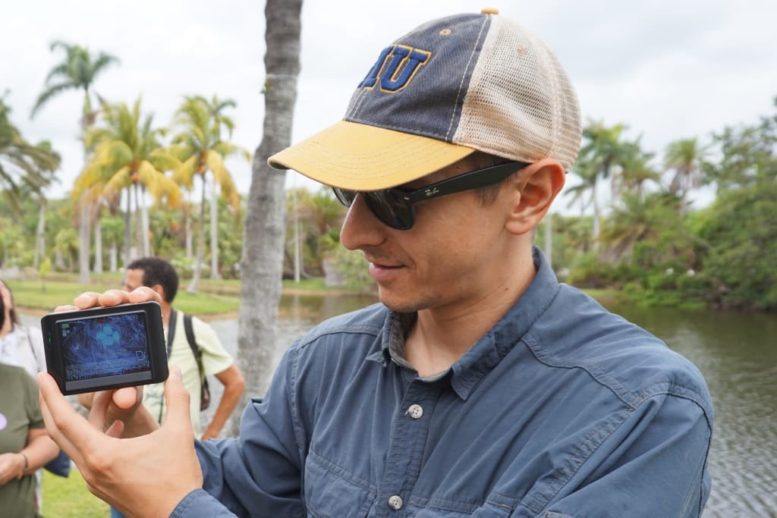At the very edges of urbanization, Northern Flicker woodpeckers live in dead palm trees raising their young. Their populations are on the decline throughout the state, especially South Florida. But Joshua Diamond was lucky enough to capture a few on film, along with other species of woodpeckers.
Diamond, an FIU instructor who recently graduated with his Ph.D. in environmental science, conducted the first research on woodpecker nesting habits in South Florida. After inspecting more than 1,860 nest cavities in 967 trees, Diamond discovered that while woodpeckers nested in pines and oaks, their favorite South Florida trees are palms. Dead ones, to be exact. In fact, more than 25 percent of woodpecker holes were made in dead royal palm trees.
“People like having life in their yards or neighborhoods. They see a dead tree and want to get rid of it,” Diamond said. “But they might not know how much more life it’s going to bring.”
Urbanization presents challenges for many species. Woodpeckers, though, have learned to live in Miami. As Diamond points out, this is a really good thing. They are a major indicator of how well we are doing at managing our cities as healthy and balanced ecosystems.
Woodpeckers are an important ecological keystone species, because when they vacate a nest, it does not go to waste. Other animals, including eastern screen owls and exotic species like parrots, take up residence. “If we lose woodpeckers, we lose a lot more,” Diamond said.
The idea for Diamond’s research came from his bicycle rides around South Florida. He often passed by palm trees peppered with woodpecker holes. Growing up in Washington, D.C., he was accustomed to seeing these birds make nests in oaks and other hardwood trees. It made him wonder: Why were they choosing palms?
Working with several municipalities, he got the inventories of all trees planted in the public right-of-way. He initially noticed the woodpecker nests from his bike, so he got back on his bike, crisscrossing through Palmetto Bay, Miami Beach, Kendall, Homestead, Redland and other areas in search of snags — or dead, standing trees.
Using a long, collapsible pole with a camera mounted on the top, he’d peak inside the nest. Diamond never knew what he might see — maybe a docile Red-bellied woodpecker sitting on eggs. Maybe a curious screech owl ready to investigate the intruder.
Diamond knows dead trees might seem like an eyesore to home owners and city officials. That’s why his research provides recommendations for landscape design, like cluster planting for certain species, so if one dies, it’s not as noticeable.
The baby Northern Flickers that Diamond caught on camera have since grown and left their nests. Come spring, they will find mates and need homes to raise their own young. Keeping woodpeckers around, especially those that are disappearing from South Florida neighborhoods, could be as simple as just letting a dead tree stand.
Diamond’s research was recently published in Urban Ecosystems and is part of FIU Tropics, an emerging preeminent program that includes the International Center for Tropical Botany and Tropical Conservation Institute.







